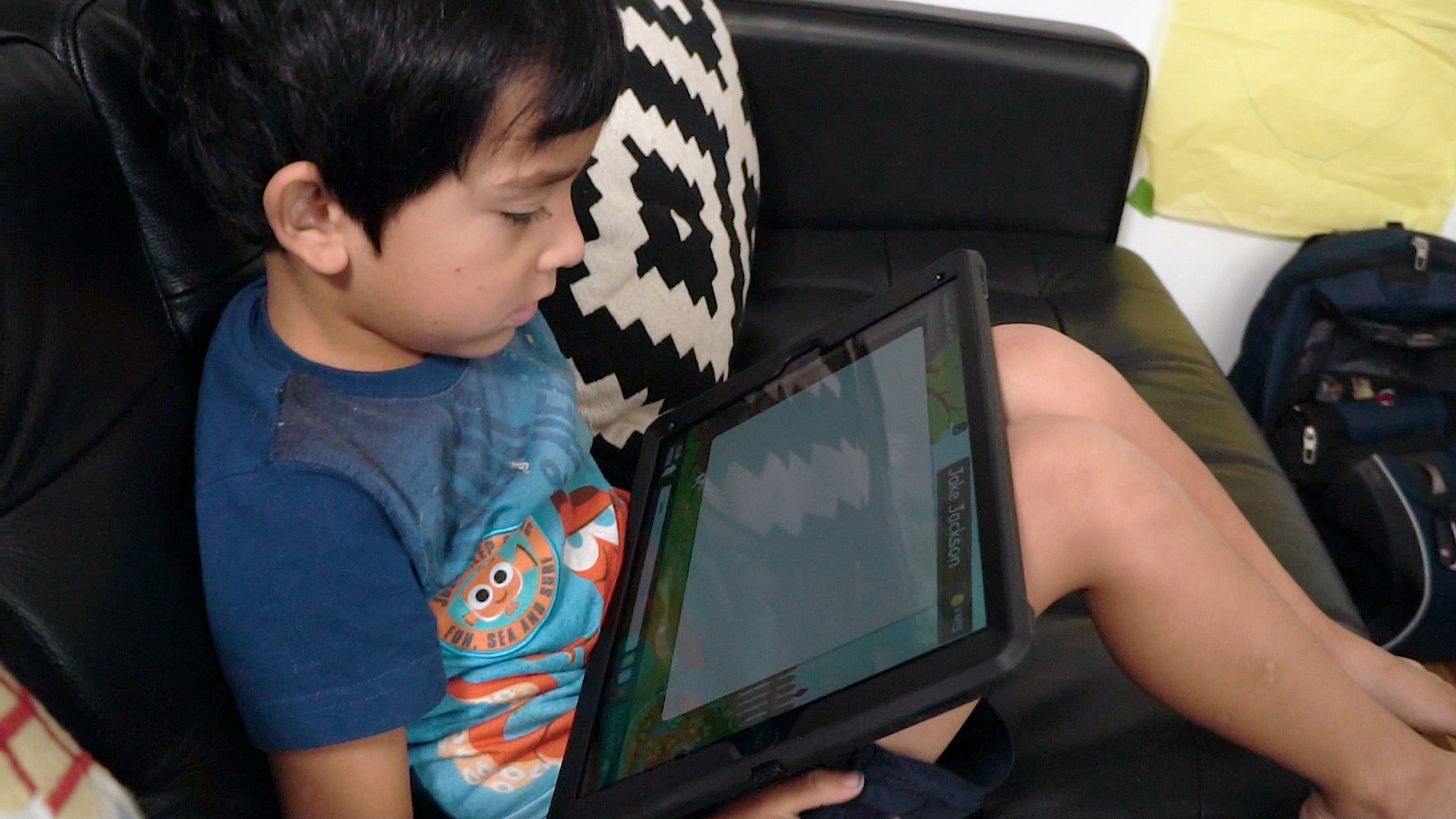Education specialists dive into how educators and parents can support struggling readers, ELL students, and students with dyslexia in an at-home learning environment. This article was originally published on eSchool News.

Parents who might be uncomfortable with continuing their role of teacher this fall can find solace in this fact: authentic teachable moments happen outside the classroom all the time. If your student or child had to rapidly transition to an at-home learning environment as a striving reader, an English language learner, or one with dyslexia, there are many ways that the support they received in school can transfer to their home.
Creating authentic learning experiences, such as having your child help prepare meals, shop, and participate in outings to parks or museums, can improve literacy. Simply engaging in conversation in the language spoken at home around shared experiences, explaining your thinking, and asking open-ended questions so your child can share their thoughts facilitates a deeper level of communication. This builds metacognition, which is key for comprehension and reading success.
As an implementation coach and educational specialist for a reading program, we would like to share two simple tips no matter what area of reading your student struggles with: finding effective resources and strategies, and building background knowledge. Students who struggle with reading need repetition, practice, and familiarity to keep the momentum going. Providing your students with authentic experiences and background knowledge on the topics they are reading gives them a head start on reading comprehension. There are many ways parents and educators can further support their readers, whatever their needs. We broke down specific strategies you can use to make learning at home as effective as possible.
For your striving readers
Set specific goals: A helpful way to begin is to identify some simple goals for reading. For example, have your student use their finger to ensure they stop and look at every word rather than guess or skip words. Another goal may be to pause whenever they see a period, since many striving readers miss punctuation. Discussing the content with your student is vital for building reading comprehension and retention. For younger children, that may involve them retelling the story. Older students may identify the key points in the text.
Communicate with your child’s teacher to understand what specific intervention goals, if any, the child is working towards. Together, form a plan for your child to continue that support to attain their goal.
Find quality tech resources: One of the most significant supports for striving readers is providing access to research-aligned reading instruction they can access at home with support from a teacher or parent. Make sure students have at-home access to decodable text and stories that match their Lexile level to practice fluency. Model reading aloud regularly.
If students have technology at home, software like Reading Horizons—a systematic, explicit approach to teaching reading and spelling—increases the ability of students of any age to decode words and connect to text.
Boost confidence: Be sure to provide frequent encouragement when a child makes progress. Celebrating small successes keeps the focus on what they can do instead of what they are not yet able to do. Research by Cambria and Guthrie (2010) indicated that confidence in oneself is more closely linked to achievement in school than any other motivator.
For your English language learners (ELLs)
Focus on speaking and listening: For Level 1 and 2 ELLs, practice in social communication and functional English are the most beneficial. Students with more speaking proficiency can begin basic reading and writing and move to more academic English as they are ready.
For students who have access, use the ABC tools on Reading Horizons Discovery or pronunciation tools on Reading Horizons Elevate to listen to how the sounds are made in the English language. The student can record themselves pronouncing the sound and play it back for accuracy.
Having access to an interactive online site is helpful, and there are a number of free resources available. Encouraging the use of English subtitles for television, free language apps, and opportunities for conversation with an English speaker can also be valuable. Pairing a student learning English with a classmate for conversations online or by phone can be a wonderful way to support students and build relationships.
Use storytelling tools: Storytelling is a fantastic way to get conversations going. For young children, use picture books and have your students discuss what is happening in the story. Use the images to build vocabulary (“See this wreath on the door?”). For older students, having them predict what will happen next, discuss an event, or give an opinion on a character’s motivation can be powerful.
For your students with dyslexia
Analyze the amount of support they need: Consider how involved you need to be in supporting your student in completing work. For example, review assigned reading and provide the pronunciation and definitions for unknown words. Have your student read the assignment aloud. If it’s too difficult, they will need you to read it to them or help them through more difficult words. This is also a great opportunity to spend more time conversing about the topic, what the words mean, and how it connects to what they’re studying. Students with dyslexia are usually able to gain a much greater understanding when they have the opportunity to connect oral discussion to text. Audiobooks for longer reading assignments are a wonderful resource for students and are readily available for most novels.
Find an alternative to reading: There are plenty of ways to help students with dyslexia connect with content, especially if the topic is more complex. Watching a YouTube video or a movie about a historical event or a science concept can be just as valuable and will help them to be much more independent.
Discuss strategies for organizing and completing work: Students with dyslexia may have difficulty with executive functioning. Keeping track of multiple assignments or projects can be overwhelming. Having an organizational system with a list of assignments, deadlines, and an estimate of the time the tasks will take to complete can help students focus on what is most immediate. Include a place to check off completed tasks. Support your student in brainstorming and planning different options to complete assignments within the given timeframe. For example, could they complete half of an assignment in the morning and use a later session to finish up? Having the student reflect on their choices and level of productivity will help make undertaking future assignments easier.
There are plenty of ways that educators and parents can support readers in a distance learning model. Remember that you’re not alone, find technology that will help, and keep the dialogue open. Learning can come from unexpected places.
About the Authors
Jillian Kaster is an implementation coach and Laura Axtell is an education specialist for Reading Horizons.
